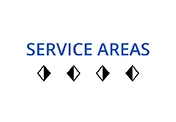Steps To Take After a Tree Falls on Your Roof
Accidents happen, and when they involve nature’s forces, they can be particularly daunting. One such unfortunate event is a tree falling on your roof. Whether due to a storm, heavy winds, or a weakened tree, a fallen tree can cause significant damage to your home and disrupt your life.
In such a situation, it’s crucial to stay calm and take the necessary steps to address the issue promptly and effectively.
Here’s a comprehensive guide on what to do after a tree falls on your roof. These 11 steps can really come in handy in a tough situation.
If you have any questions or concerns beyond this guide, contact Style Roofing. Our well trained, highly knowledgeable, and friendly sales team are ready to assist you in assessing and repairing any damage to code and to your comfort.
This may even be a great opportunity to replace an aging roof with new and stronger material that will keep you and your loved ones safe from the elements and come backed by a multi-year warranty.
Step 1: Ensure Everyone’s Safety
The safety of yourself and your loved ones should always be your top priority. If the tree fall is recent and you’re inside the house, check to ensure that everyone is unharmed. If there are any injuries, call for medical assistance immediately.
If you suspect structural damage to your home, consider evacuating until the extent of the damage can be assessed.
Step 2: Contact Emergency Services
In the case of significant damage or if the tree fall poses an immediate danger, call emergency services. This might include your local fire department, police, or relevant disaster response units. They can help secure the area, assess the situation, and provide guidance on how to proceed.
Step 3: Document the Damage
Before you start any cleanup or repairs, document the extent of the damage for insurance purposes. Take clear photographs and videos of the fallen tree, the damage it caused, and any affected areas inside your home.
This documentation will be invaluable when you file an insurance claim.
Step 4: Contact Your Insurance Company
As soon as it’s safe to do so, contact your insurance company to report the incident and initiate the claims process. They will guide you through the necessary steps and may even recommend preferred contractors for repairs.
Provide them with the documentation you’ve gathered and follow their instructions closely to expedite the claims process.
Step 5: Assess the Damage
If the tree has caused severe damage to your roof or structural elements of your home, it’s best to let professionals handle the assessment. Contact a licensed contractor or a structural engineer to evaluate the extent of the damage and provide recommendations for repairs.
They can determine if the home is safe to occupy or if temporary accommodations are needed.
Step 6: Mitigate Further Damage
While waiting for the professionals to arrive, take steps to prevent further damage. If possible, cover any broken windows, openings in your roof with tarps or plywood to prevent rainwater from entering your home.
Be cautious while doing this, as the structure might be unstable. Safety should always come first.
Step 7: Remove Debris
Once you have the go-ahead from professionals and it’s safe to do so, start removing debris from your roof and the surrounding area. This can help prevent additional damage and expedite the repair process.
However, always prioritize safety and wear appropriate protective gear during cleanup.
Step 8: Schedule Repairs
Based on the assessment of the damage, work with your insurance company and the contractors to schedule the necessary repairs. Roof repairs can range from minor fixes to complete replacements, so be prepared for the scope of work that may be required.
Choose reputable contractors with experience in handling similar situations to ensure quality work.
Step 9: Communicate with Your Neighbors
If the fallen tree affected your neighbor’s property or if there is a shared boundary, communicate with them about the situation. Address any potential property line disputes or shared responsibilities for cleanup and repairs.
Clear communication can prevent misunderstandings and foster a sense of community support during challenging times.
Step 10: Turn off utilities
Shutting off gas, water, and electricity minimizes the risk of fires, gas leaks, electrical shock, or water damage that can result from a fallen tree impacting utility lines.
Step 11: Learn and Prevent
Once the repairs are completed and life is back to normal, take the opportunity to learn from the experience. If the tree fell due to preventable reasons, such as a decayed or weak tree, ensure that you regularly inspect the trees around your property and address any potential hazards.
Additionally, consider strengthening your home’s resilience to such incidents by investing in measures like reinforcing your roof or trimming overhanging branches.
Hire a reputable roofing contractor:
The last step to take when a tree falls on your roof is to hire a reputable roofing contractor like Style Roofing to assess and repair the damage to your roof. We will provide a detailed estimate and timeline for the repairs so you know that you’re in good hands and well taken care of.











